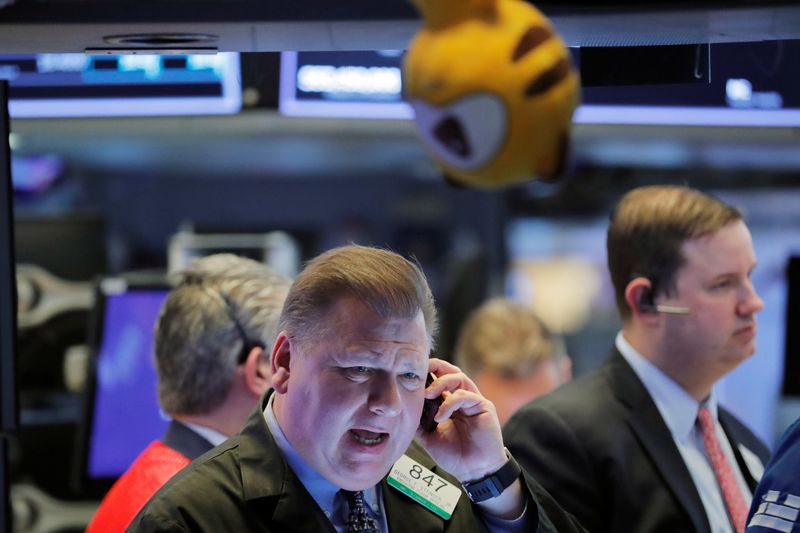This post was originally published on this site
https://i-invdn-com.akamaized.net/trkd-images/LYNXNPEG1Q1AE_L.jpg © Reuters. Traders work on the floor of the New York Stock Exchange shortly after the opening bell in New York
© Reuters. Traders work on the floor of the New York Stock Exchange shortly after the opening bell in New YorkBy Medha Singh
(Reuters) – Wall Street’s main indexes fell for the sixth straight session and slipped into correction territory on Thursday, as the rapid spread of the coronavirus outside China intensified fears about the hit to economic growth and corporate earnings.
The and Nasdaq are now more than 10% below their intraday record highs hit on Feb. 19, while the Dow Jones Industrials is 10% off its Feb.12 peak.
The indexes were set for their steepest weekly pullback since the global financial crisis as rising number of new infections outside China raised fears of a pandemic.
Adding to worries, the U.S. Centers for Disease Control and Prevention confirmed an infection in California in a person who reportedly did not have relevant travel history or exposure to another known patient.
“In the recent week, markets have come to realize that the outbreak is much worse and are now realistically pricing in the impact of the virus on the economy,” said Philip Marey, senior U.S. strategist at Rabobank.
“In that sense it’s a bit of a catching up from the relative optimism that was there in the beginning when markets thought (the virus) will be contained to China with some minor outbreak outside.”
Industry analysts and economists continued to sound the alarm as they assessed the impact of the coronavirus, with Goldman Sachs (NYSE:) saying U.S. firms will generate no earnings growth in 2020.
Bank of America (NYSE:) slashed its global growth forecast to the lowest level since the peak of the financial crisis.
At 10:08 a.m. ET, the was down 573.93 points, or 2.13%, at 26,383.66, the S&P 500 was down 67.33 points, or 2.16%, at 3,049.06. The was down 221.07 points, or 2.46%, at 8,759.70. All of the 11 S&P sectors were deep in the red with energy losing the most, down 4.1%. Technology, financial, industrials, consumer discretionary, materials and communication services sectors dropped more than 2% each.
Declining issues outnumbered advancers for a 8.83-to-1 ratio on the NYSE and for a 8.65-to-1 ratio on the Nasdaq.
The S&P index recorded four new 52-week highs and 90 new lows, while the Nasdaq recorded 15 new highs and 361 new lows.
Fusion Media or anyone involved with Fusion Media will not accept any liability for loss or damage as a result of reliance on the information including data, quotes, charts and buy/sell signals contained within this website. Please be fully informed regarding the risks and costs associated with trading the financial markets, it is one of the riskiest investment forms possible.

